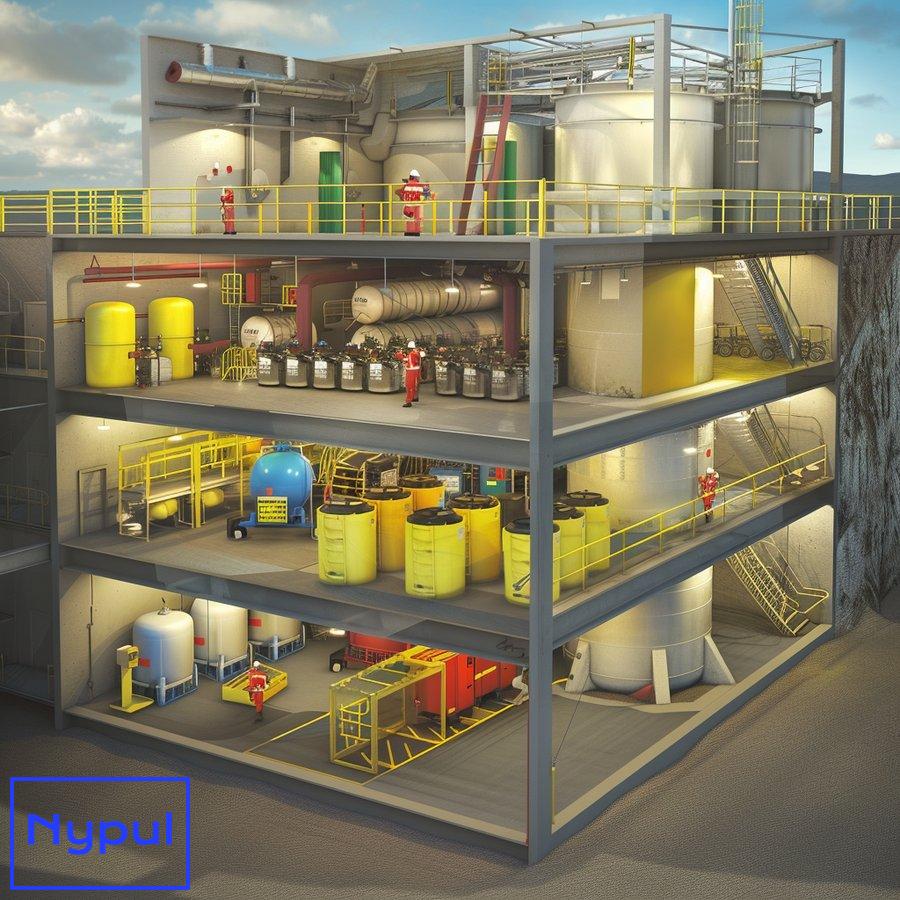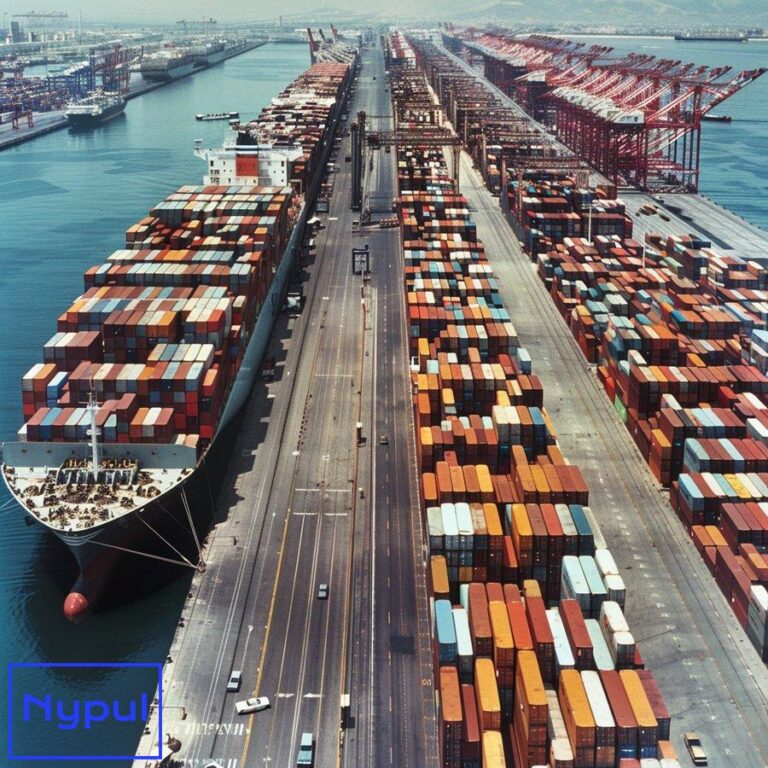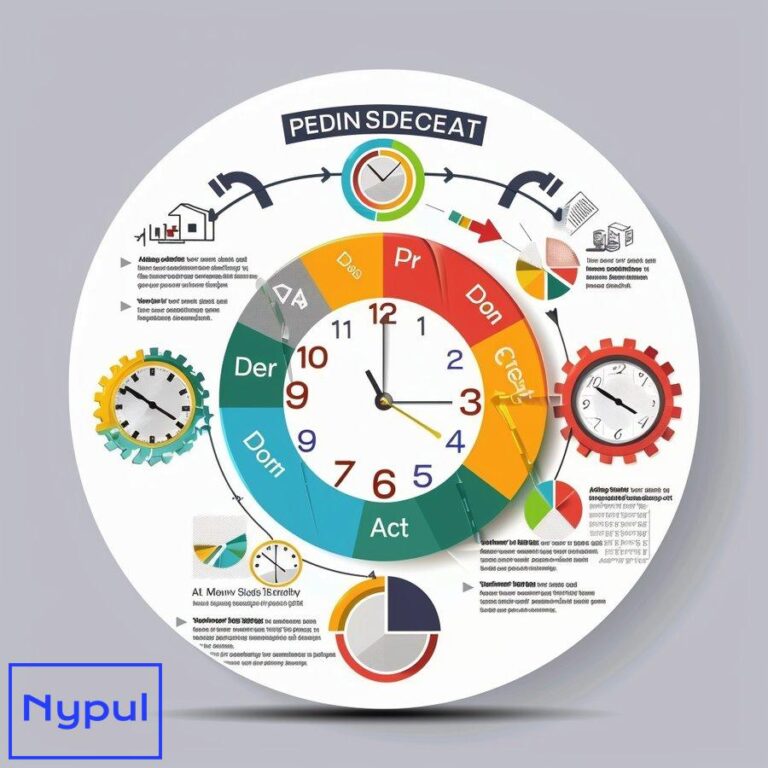What Are the Requirements for Handling Hazardous Materials
What are hazardous materials and why are they dangerous?
Hazardous materials, often referred to as hazmat, are substances or items that pose risks to health, safety, property, or the environment. These materials can be found in various forms – solids, liquids, or gases – and are present in many industries and everyday products.
The U.S. Department of Transportation (DOT) defines hazardous materials as substances capable of posing an unreasonable risk to health, safety, and property when transported in commerce. This definition encompasses a wide range of items, from common household products to industrial chemicals.
Hazardous materials are classified into nine primary classes based on their specific risks:
Class 1: Explosives
Materials that can explode, deflagrate, or produce pyrotechnic effects.
Class 2: Gases
Compressed, liquefied, or dissolved under pressure gases.
Class 3: Flammable Liquids
Liquids, mixtures of liquids, or liquids containing solids that can catch fire easily.
Class 4: Flammable Solids
Solids that can ignite through friction, absorption of moisture, or spontaneous chemical changes.
Class 5: Oxidizing Substances and Organic Peroxides
Materials that yield oxygen, causing or enhancing the combustion of other materials.
Class 6: Toxic and Infectious Substances
Materials capable of causing death or serious injury if swallowed, inhaled, or absorbed through the skin.
Class 7: Radioactive Materials
Substances that emit ionizing radiation.
Class 8: Corrosive Substances
Materials that can destroy living tissue or corrode metals.
Class 9: Miscellaneous Dangerous Goods
Hazardous materials not covered by other classes, including environmentally hazardous substances.
The dangers associated with hazardous materials stem from their inherent properties. These substances can cause immediate harm through direct contact, inhalation, or ingestion. They may also pose long-term health risks or environmental damage. Some specific dangers include:
Fire and Explosion Risks
Many hazardous materials are flammable or explosive, posing significant risks in case of accidents or improper handling.
Health Hazards
Exposure to certain hazardous materials can lead to acute or chronic health issues, ranging from skin irritation to cancer.
Environmental Impact
Spills or improper disposal of hazardous materials can contaminate soil and water sources, harming ecosystems and wildlife.
Reactivity
Some hazardous materials can react violently with other substances, air, or water, creating additional hazards.
Corrosion
Corrosive materials can damage containers, leading to leaks and potential exposure risks.
Understanding the nature and risks of hazardous materials is crucial for anyone involved in their handling, storage, or transportation. This knowledge forms the foundation for implementing proper safety measures and complying with regulations designed to protect people and the environment from these potential dangers.
How do federal and international regulations govern hazardous materials handling?
The handling of hazardous materials is subject to a complex web of federal and international regulations. These regulations aim to ensure the safe handling, storage, transportation, and disposal of hazardous materials to protect human health and the environment.
In the United States, several federal agencies oversee hazardous materials regulations:
Department of Transportation (DOT)
The DOT regulates the transportation of hazardous materials through its Pipeline and Hazardous Materials Safety Administration (PHMSA). The Hazardous Materials Regulations (HMR), found in 49 CFR Parts 171-180, cover classification, packaging, hazard communication, and operational requirements for hazardous materials in transit.
Occupational Safety and Health Administration (OSHA)
OSHA sets standards for workplace safety, including those related to hazardous materials. Key regulations include the Hazard Communication Standard (29 CFR 1910.1200) and various substance-specific standards.
Environmental Protection Agency (EPA)
The EPA regulates hazardous waste management under the Resource Conservation and Recovery Act (RCRA) and chemical safety under the Toxic Substances Control Act (TSCA).
Nuclear Regulatory Commission (NRC)
The NRC oversees the safe use of radioactive materials in industry, medicine, and research.
These agencies often work in coordination to ensure comprehensive coverage of hazardous materials regulations. For instance, the DOT and OSHA have aligned their hazard classification and labeling requirements with the Globally Harmonized System of Classification and Labeling of Chemicals (GHS).
On the international level, several agreements and organizations govern hazardous materials:
United Nations Recommendations on the Transport of Dangerous Goods
These recommendations form the basis for many national and international regulations.
International Maritime Dangerous Goods (IMDG) Code
Governs the sea transport of hazardous materials.
International Civil Aviation Organization (ICAO) Technical Instructions
Regulates the air transport of dangerous goods.
Basel Convention
Controls transboundary movements of hazardous wastes and their disposal.
Stockholm Convention
Aims to eliminate or restrict the production and use of persistent organic pollutants.
These international regulations often influence and align with national regulations to facilitate global trade and ensure consistent safety standards.
Key aspects of hazardous materials regulations include:
Classification and Identification
Regulations provide detailed criteria for classifying hazardous materials based on their properties and risks.
Packaging and Containment
Specific requirements for packaging materials, design, and testing to ensure safe containment during handling and transport.
Labeling and Marking
Standardized systems for labeling hazardous materials to communicate risks and handling requirements.
Documentation
Requirements for shipping papers, safety data sheets, and other documentation to accompany hazardous materials.
Training
Mandatory training requirements for personnel involved in handling hazardous materials.
Emergency Response
Regulations governing emergency preparedness, reporting, and response procedures.
Transportation
Mode-specific regulations for road, rail, air, and sea transport of hazardous materials.
Compliance with these regulations is mandatory, and violations can result in significant penalties. The regulatory landscape is dynamic, with frequent updates to address new hazards, technological advancements, and lessons learned from incidents.
For businesses dealing with hazardous materials, staying informed about relevant regulations is crucial. This often involves:
Regular Training and Education
Ensuring staff are up-to-date with current regulations and best practices.
Compliance Audits
Conducting regular internal audits to ensure adherence to regulations.
Engagement with Regulatory Agencies
Participating in public comment periods for proposed regulations and seeking clarification when needed.
Industry Associations
Joining relevant industry associations to stay informed about regulatory changes and best practices.
The complex regulatory environment surrounding hazardous materials handling underscores the importance of these substances and the potential risks they pose. By establishing and enforcing comprehensive regulations, governments and international bodies aim to minimize these risks and protect public health and the environment.
What training and certifications are required for handling hazardous materials?
Proper training and certification are crucial for individuals handling hazardous materials to ensure safety and regulatory compliance. The specific requirements can vary depending on the nature of the work, the types of hazardous materials involved, and the applicable regulations. Here’s an overview of the key training and certification requirements:
DOT Hazardous Materials Training
The U.S. Department of Transportation requires training for all hazmat employees under 49 CFR 172.704. This training must include:
General Awareness/Familiarization Training
Overview of hazardous materials regulations and recognition of hazardous materials.
Function-Specific Training
Detailed training on the specific hazmat duties the employee performs.
Safety Training
Emergency response information, measures to protect employees from hazards, and methods to avoid accidents.
Security Awareness Training
Awareness of security risks associated with hazardous materials transportation.
In-Depth Security Training
Required for employees of companies with a DOT-required security plan.
DOT hazmat training must be completed within 90 days of employment or change in job function. Recurrent training is required every three years.
OSHA Hazardous Waste Operations and Emergency Response (HAZWOPER) Training
OSHA requires HAZWOPER training under 29 CFR 1910.120 for employees involved in hazardous waste operations or emergency response. The levels of training include:
40-Hour HAZWOPER Training
Required for workers involved in hazardous waste operations or at uncontrolled hazardous waste sites.
24-Hour HAZWOPER Training
For workers at sites where hazardous substances are present but exposure is unlikely to exceed permissible exposure limits.
8-Hour HAZWOPER Supervisor Training
Additional training for supervisors of hazardous waste operations.
8-Hour Annual Refresher Training
Required for all HAZWOPER-certified workers to maintain their certification.
OSHA Hazard Communication Training
Under the Hazard Communication Standard (29 CFR 1910.1200), employers must provide employees with information and training on hazardous chemicals in their work area. This training must cover:
- Methods to detect the presence or release of hazardous chemicals
- Physical and health hazards of chemicals in the work area
- Measures employees can take to protect themselves
- Details of the hazard communication program
EPA Resource Conservation and Recovery Act (RCRA) Training
The EPA requires training for personnel handling hazardous waste under 40 CFR 262.17. This training must cover:
- Proper waste handling and emergency procedures
- Implementation of the facility’s contingency plan
- Annual review of initial training
International Air Transport Association (IATA) Dangerous Goods Regulations (DGR) Training
For air shipments of dangerous goods, IATA requires specific training outlined in their Dangerous Goods Regulations. This includes:
- General familiarization training
- Function-specific training
- Safety training
- Security awareness training
IATA DGR training must be repeated every 24 months.
International Maritime Dangerous Goods (IMDG) Code Training
For sea transport of dangerous goods, the International Maritime Organization requires training under the IMDG Code. This includes:
- General awareness and familiarization training
- Function-specific training
- Safety training
- Security awareness training
IMDG Code training must be periodically supplemented with retraining.
Certifications
While not always mandatory, certain certifications can demonstrate expertise in hazardous materials handling:
Certified Hazardous Materials Manager (CHMM)
Offered by the Institute of Hazardous Materials Management, this certification demonstrates broad knowledge of hazardous materials management.
Certified Dangerous Goods Professional (CDGP)
Offered by the Dangerous Goods Trainers Association, this certification focuses on the transportation of dangerous goods.
Certified Safety Professional (CSP)
While not specific to hazardous materials, this certification from the Board of Certified Safety Professionals often includes hazmat knowledge.
Certified Industrial Hygienist (CIH)
Offered by the American Board of Industrial Hygiene, this certification includes aspects of chemical hazard assessment and control.
It’s important to note that training requirements can vary by state and local jurisdictions, which may impose additional or more stringent requirements. Employers should carefully review all applicable regulations to ensure their training programs meet or exceed the required standards.
Effective hazardous materials training programs often include:
Hands-On Training
Practical exercises to reinforce theoretical knowledge.
Scenario-Based Learning
Simulations of potential hazmat incidents to practice response procedures.
Regular Assessments
To ensure retention of knowledge and skills.
Documentation
Detailed records of all training completed, including dates, content, and trainers.
By ensuring proper training and certification, organizations can significantly reduce the risks associated with handling hazardous materials, protect their employees and the environment, and maintain compliance with complex regulatory requirements.
How should personal protective equipment be used when handling hazardous materials?
Personal Protective Equipment (PPE) is crucial for safeguarding individuals who handle hazardous materials. The proper use of PPE can significantly reduce the risk of exposure to harmful substances and potential injuries. The selection and use of PPE for hazardous materials handling should be based on a thorough hazard assessment and comply with relevant regulations, particularly OSHA standards.
PPE Selection

The choice of PPE depends on several factors:
Nature of the Hazardous Material
Chemical properties, physical state, and potential health effects.
Work Environment
Temperature, humidity, and potential for physical hazards.
Task Being Performed
Duration of exposure, type of handling (e.g., pouring, spraying).
Route of Exposure
Inhalation, skin contact, eye contact, or ingestion.
Based on these factors, PPE is typically categorized into four levels of protection:
Level A
Highest level of respiratory, skin, and eye protection.
Used for: Unknown substances or those requiring the highest level of protection.
Includes: Fully encapsulating, chemical-resistant suit with a self-contained breathing apparatus (SCBA).
Level B
High level of respiratory protection but less skin protection than Level A.
Used for: Known hazards requiring a high level of respiratory protection but less skin protection.
Includes: Chemical-resistant clothing with SCBA or supplied-air respirator.
Level C
Moderate respiratory protection and skin protection.
Used for: Known hazards where air-purifying respirators are sufficient.
Includes: Chemical-resistant clothing with air-purifying respirator.
Level D
Minimal protection, used when no respiratory or skin hazards exist.
Used for: Nuisance contamination only.
Includes: Coveralls, safety boots, and safety glasses.
Types of PPE
Respiratory Protection
Ranges from disposable masks to SCBAs.
Selection based on the type and concentration of airborne contaminants.
Must be fit-tested and properly maintained.
Eye and Face Protection
Safety glasses, goggles, or face shields.
Must be compatible with respiratory protection if used simultaneously.
Hand Protection
Chemical-resistant gloves.
Material selection based on the specific chemicals being handled.
Body Protection
Chemical-resistant suits, aprons, or coveralls.
Material and design depend on the level of protection required.
Foot Protection
Chemical-resistant boots or shoe covers.
May need to be steel-toed for additional physical protection.
Head Protection
Hard hats or chemical-resistant hoods.
Required in areas with potential for falling objects or splash hazards.
Proper Use of PPE
Training
All employees must be trained on:
– When PPE is necessary
– What PPE is necessary
– How to properly don, doff, adjust, and wear PPE
– Limitations of the PPE
– Proper care, maintenance, useful life, and disposal of PPE
Inspection
PPE should be inspected before each use for:
– Tears, holes, or other damage
– Proper fit and seal (for respirators)
– Expiration dates (for cartridges and filters)
Donning and Doffing
Proper procedures must be followed to avoid contamination:
– Don PPE in a clean area before entering the hazardous zone
– Doff PPE in a designated decontamination area
– Remove most contaminated items first
Maintenance and Storage
– Clean and decontaminate PPE after each use
– Store in a clean, dry area away from potential contaminants
– Replace damaged or worn PPE immediately
Disposal
– Dispose of contaminated PPE according to hazardous waste regulations
– Never reuse disposable PPE
PPE Program
OSHA requires employers to establish a PPE program as part of their overall health and safety program. This program should include:
Hazard Assessment
Identify and evaluate workplace hazards that necessitate PPE use.
PPE Selection
Choose appropriate PPE based on the hazard assessment.
Training
Provide comprehensive training on PPE use and maintenance.
Maintenance and Replacement
Establish procedures for cleaning, storing, and replacing PPE.
Program Evaluation
Regularly review and update the PPE program to ensure its effectiveness.
Documentation
Maintain records of hazard assessments, PPE selections, and employee training.
Common Challenges and Solutions
Challenge: Heat Stress
PPE can increase the risk of heat stress, especially in hot environments.
Solution: Implement work-rest cycles, provide cooling vests, and ensure proper hydration.
Challenge: Reduced Dexterity
Chemical-resistant gloves can impair fine motor skills.
Solution: Select gloves that balance protection and dexterity, and provide tools designed for gloved use.
Challenge: Communication Difficulties
Full-face respirators can muffle speech and impair visibility.
Solution: Use communication devices compatible with PPE and train on hand signals.
Challenge: Psychological Stress
Wearing restrictive PPE for extended periods can cause anxiety and claustrophobia.
Solution: Provide mental health support and gradually acclimate workersto extended PPE use.
The proper use of PPE is a critical component of hazardous materials safety. When selected, used, and maintained correctly, PPE serves as a last line of defense against potential exposures and injuries. However, it’s important to remember that PPE should be used in conjunction with other safety measures, such as engineering controls and safe work practices, to provide comprehensive protection for workers handling hazardous materials.
What are the proper labeling and documentation requirements for hazardous materials?
Proper labeling and documentation are essential for the safe handling, storage, and transportation of hazardous materials. These requirements ensure that all parties involved are aware of the potential dangers and can take appropriate precautions. The specific requirements can vary depending on the regulatory framework and the context in which the hazardous materials are being used or transported.
Labeling Requirements
Hazardous materials must be clearly labeled to communicate their hazards. The labeling systems most commonly used are:
Globally Harmonized System (GHS)
The GHS is an internationally agreed-upon system for classifying and labeling chemicals. Under GHS, labels must include:
- Product identifier
- Supplier identification
- Hazard pictograms
- Signal word (either “Danger” or “Warning”)
- Hazard statements
- Precautionary statements
Department of Transportation (DOT) Labeling
For transportation purposes, the DOT requires:
- Proper shipping name
- UN/NA identification number
- Hazard class or division number
- Packing group (if applicable)
- Appropriate hazard warning labels
National Fire Protection Association (NFPA) 704 Diamond
Often used for storage containers and facility placarding, this system uses a color-coded diamond to quickly communicate hazards:
- Red: Flammability
- Blue: Health hazard
- Yellow: Instability
- White: Special hazards (e.g., water reactivity, oxidizer)
Workplace Labeling
OSHA’s Hazard Communication Standard requires workplace labels to include:
- Product identifier
- Signal word
- Hazard statement(s)
- Pictogram(s)
- Precautionary statement(s)
- Name, address, and telephone number of the chemical manufacturer, importer, or other responsible party
Documentation Requirements
Proper documentation is crucial for compliance and safety. Key documents include:
Safety Data Sheets (SDS)
Formerly known as Material Safety Data Sheets (MSDS), these documents provide detailed information about a hazardous material’s properties, hazards, and safety precautions. Under GHS, SDSs must include 16 specific sections:
- Identification
- Hazard(s) identification
- Composition/information on ingredients
- First-aid measures
- Fire-fighting measures
- Accidental release measures
- Handling and storage
- Exposure controls/personal protection
- Physical and chemical properties
- Stability and reactivity
- Toxicological information
- Ecological information
- Disposal considerations
- Transport information
- Regulatory information
- Other information
SDSs must be readily accessible to employees and updated when new information becomes available.
Shipping Papers
For transportation of hazardous materials, shipping papers are required. These must include:
- Proper shipping name
- Hazard class or division
- UN or NA identification number
- Packing group (if applicable)
- Total quantity
- 24-hour emergency response telephone number
- Shipper’s certification (for non-bulk shipments)
Hazardous Waste Manifests
For hazardous waste transportation, a Uniform Hazardous Waste Manifest is required. This document tracks hazardous waste from its point of generation to its final disposal site.
Inventory Records
Facilities storing hazardous materials must maintain accurate inventory records, including:
- Chemical name and common name
- Hazard classification
- Quantity stored
- Storage location
- Date received and expiration date (if applicable)
Training Records
Documentation of employee training related to hazardous materials handling must be maintained, including:
- Date of training
- Topics covered
- Names of employees trained
- Name of trainer
Best Practices for Labeling and Documentation
Consistency
Use consistent terminology and formatting across all labels and documents.
Visibility
Ensure labels are clearly visible and not obscured by other markings or dirt.
Durability
Use materials for labels that can withstand the environment where they’ll be used (e.g., weather-resistant for outdoor storage).
Multiple Languages
In workplaces with non-English speaking employees, consider providing labels and documentation in multiple languages.
Regular Review
Implement a system for regularly reviewing and updating labels and documentation to ensure accuracy and compliance with current regulations.
Electronic Systems
Consider implementing electronic systems for managing SDSs and other documentation to improve accessibility and ease of updating.
Supplier Communication
Establish clear communication channels with suppliers to ensure you receive updated SDSs and other relevant documentation promptly.
Employee Access
Ensure employees know how to access and interpret labels and documentation, particularly SDSs.
Audit Trail
Maintain records of when labels were applied or updated and when documents were reviewed or revised.
Proper labeling and documentation are not just regulatory requirements; they are crucial for ensuring the safety of workers, emergency responders, and the general public. They provide essential information for the safe handling, storage, and transportation of hazardous materials and play a vital role in emergency preparedness and response.
By maintaining comprehensive and accurate labels and documentation, organizations can significantly reduce the risks associated with hazardous materials, improve their overall safety performance, and ensure compliance with complex regulatory requirements.
How should hazardous materials be stored and segregated?
Proper storage and segregation of hazardous materials are crucial for preventing accidents, minimizing risks, and ensuring regulatory compliance. The primary goal is to prevent incompatible materials from coming into contact with each other and to contain potential spills or releases. Here’s a comprehensive guide to storing and segregating hazardous materials:
General Principles of Hazardous Materials Storage

Compatibility
Store chemicals based on their compatibility, not alphabetically or randomly.
Containment
Use appropriate containment systems to prevent spills from spreading.
Ventilation
Ensure adequate ventilation to prevent the buildup of hazardous vapors.
Temperature Control
Store materials within their recommended temperature range.
Security
Restrict access to hazardous materials storage areas to authorized personnel only.
Labeling
Clearly label all storage areas and containers.
Inventory Management
Maintain an up-to-date inventory and regularly inspect stored materials.
Storage Area Design
Location
Choose a storage area away from high-traffic areas, heat sources, and direct sunlight.
Construction
Use fire-resistant materials for construction.
Flooring
Install impermeable flooring with curbing or sloped to a collection area.
Shelving
Use sturdy, non-reactive shelving materials. Secure shelves to prevent tipping.
Electrical Systems
Ensure electrical systems are explosion-proof where necessary.
Emergency Equipment
Install appropriate fire suppression systems, eyewash stations, and safety showers.
Segregation Principles
Hazardous materials should be segregated based on their chemical properties and potential reactions. Here’s a basic segregation scheme:
Flammable and Combustible Liquids
Store in approved flammable storage cabinets or dedicated storage rooms.
Keep away from oxidizers, heat sources, and ignition sources.
Oxidizers
Store away from flammables, combustibles, and reducing agents.
Use non-combustible storage cabinets or areas.
Acids
Segregate inorganic and organic acids.
Store away from bases, active metals, and chemicals that could generate toxic gases if mixed.
Bases
Store away from acids and materials that could generate heat if mixed.
Water-Reactive Chemicals
Store in a dry, cool location.
Keep away from water sources and sprinkler systems.
Pyrophoric Materials
Store in a cool, dry area away from flammables and oxidizers.
May require storage under an inert atmosphere.
Peroxide-Forming Chemicals
Store at the lowest possible temperature consistent with the solubility or freezing point.
Label with date received and date opened.
Toxic Materials
Store in a secure area with proper ventilation.
Keep away from acids, bases, and other reactive chemicals.
Specific Storage Requirements
Gas Cylinders
Store upright and secured to prevent falling.
Segregate full and empty cylinders.
Keep away from heat sources and corrosive atmospheres.
Flammable Liquids
Store in approved safety cans or cabinets.
Ground and bond containers during transfer operations.
Corrosives
Store in corrosion-resistant secondary containment.
Keep acids and bases in separate containment areas.
Oxidizers
Store in a cool, dry area away from combustible materials.
Use non-combustible storage cabinets or areas.
Reactive Materials
Store in a cool, dry area.
May require special storage conditions (e.g., under nitrogen, refrigerated).
Storage Quantity Limits
Adhere to quantity limits set by fire codes and environmental regulations. These limits often depend on:
- Building construction
- Presence of sprinkler systems
- Type of storage (cabinets, rooms, or outdoor storage)
Storage Compatibility Chart
A storage compatibility chart is a valuable tool for determining which chemicals can be safely stored together. Here’s a simplified version:
| Chemical Class | Acids | Bases | Oxidizers | Flammables | Water Reactives |
|---|---|---|---|---|---|
| Acids | X | No | No | No | No |
| Bases | No | X | No | No | No |
| Oxidizers | No | No | X | No | No |
| Flammables | No | No | No | X | No |
| Water Reactives | No | No | No | No | X |
X = Can be stored together
No = Should not be stored together
Best Practices for Storage and Segregation
Regular Inspections
Conduct regular inspections of storage areas to identify potential issues.
Rotation
Implement a “first-in, first-out” system to ensure older materials are used first.
Spill Control
Keep spill control materials readily available in storage areas.
Container Integrity
Regularly check containers for signs of damage or deterioration.
Secondary Containment
Use secondary containment for liquids to contain potential spills.
Minimize Quantities
Store only the quantities needed for operations to reduce risks.
Training
Ensure all personnel are trained on proper storage and segregation procedures.
Documentation
Maintain accurate records of stored materials, including storage locations and quantities.
Emergency Planning
Develop and regularly review emergency response plans for potential incidents.
**Proper storage and segregation of hazardous materials are critical components of a comprehensive safety program. By following these guidelines, organizations can significantly reduce the risks associated with hazardous materials storage, protect their employees and facilities, and maintain compliance with regulatory requirements. Remember that specific storage requirements may vary depending on local regulations and the specific materials being stored, so always consult applicable regulations and safety data sheets for detailed guidance.
What are the specific transportation requirements for hazardous materials?
The transportation of hazardous materials is heavily regulated to ensure public safety and environmental protection. In the United States, the primary regulations governing hazmat transportation are found in the Department of Transportation’s (DOT) Hazardous Materials Regulations (HMR), 49 CFR Parts 171-180. Internationally, regulations such as the International Maritime Dangerous Goods (IMDG) Code and the International Air Transport Association (IATA) Dangerous Goods Regulations apply. Here’s a comprehensive overview of the specific requirements for hazardous materials transportation:

Classification and Identification
Proper classification is the foundation of hazmat transportation safety. Shippers must:
Determine Hazard Class
Identify which of the nine DOT hazard classes the material belongs to:
1. Explosives
2. Gases
3. Flammable Liquids
4. Flammable Solids
5. Oxidizing Substances and Organic Peroxides
6. Toxic and Infectious Substances
7. Radioactive Materials
8. Corrosives
9. Miscellaneous Dangerous Goods
Assign Packing Group
For many hazard classes, a Packing Group (I, II, or III) must be assigned based on the degree of danger.
Determine Proper Shipping Name
Use the Hazardous Materials Table in 49 CFR 172.101 to identify the correct shipping name.
Identify UN/NA Number
Assign the appropriate United Nations (UN) or North American (NA) identification number.
Packaging Requirements
Proper packaging is crucial for containing hazardous materials during transportation:
Authorized Packaging
Use only packaging authorized for the specific material as listed in the HMR.
Performance-Oriented Packaging Standards
Ensure packaging meets the required performance standards (e.g., drop tests, stack tests).
Closure Instructions
Provide specific closure instructions to ensure packages are properly sealed.
Fill Limits
Adhere to specified fill limits to allow for material expansion.
Compatibility
Ensure packaging materials are compatible with the hazardous materials they contain.
Marking and Labeling
Clear and accurate marking and labeling are essential for communicating hazards:
Package Markings
Include:
– Proper shipping name
– UN/NA identification number
– Shipper’s or consignee’s name and address
Hazard Labels
Apply appropriate hazard labels as specified in the HMR.
Orientation Arrows
Use orientation arrows on packages containing liquids.
Limited Quantity Markings
Use specific markings for materials shipped under limited quantity provisions.
Documentation
Proper documentation is crucial for communicating hazard information:
Shipping Papers
Include:
– Proper shipping name
– Hazard class or division
– UN/NA identification number
– Packing group
– Total quantity
– 24-hour emergency response telephone number
– Shipper’s certification
Emergency Response Information
Provide information for use in the event of an accident or incident.
Air Waybill
For air shipments, include additional information required by IATA.
Mode-Specific Requirements
Different transportation modes have specific requirements:
Highway Transportation
– Placard vehicles as required
– Follow routing requirements for certain materials
– Comply with tunnel restrictions where applicable
Rail Transportation
– Use appropriate tank cars for bulk shipments
– Follow specific loading and unloading procedures
Air Transportation
– Comply with IATA Dangerous Goods Regulations
– Use UN specification packaging
– Adhere to strict quantity limitations
Maritime Transportation
– Follow IMDG Code requirements
– Use proper stowage and segregation on vessels
Training Requirements
All hazmat employees must receive function-specific training:
General Awareness/Familiarization
Overview of hazardous materials regulations.
Function-Specific
Training on specific job functions related to hazmat transportation.
Safety
Training on emergency response procedures and accident prevention.
Security Awareness
Training on security risks associated with hazmat transportation.
Modal-Specific
Additional training for air, vessel, or highway transportation as applicable.
Security Plans
Certain high-risk materials require a security plan, which must include:
- Personnel security
- Unauthorized access prevention
- En route security measures
Emergency Response
Shippers and carriers must be prepared for potential incidents:
Emergency Response Information
Provide immediate access to emergency response information.
Incident Reporting
Report incidents meeting specific criteria to the National Response Center.
Specialized Requirements
Some materials have additional, specific requirements:
Radioactive Materials
Follow specific packaging, labeling, and shipping paper requirements.
Lithium Batteries
Comply with specific packaging, marking, and documentation requirements.
Infectious Substances
Use specialized packaging and follow strict handling procedures.
Compliance and Enforcement
DOT and other agencies conduct inspections and enforce regulations:
Inspections
Vehicles, packages, and documentation may be inspected during transportation.
Penalties
Violations can result in civil and criminal penalties.
Recordkeeping
Maintain required records for specified periods.
International Considerations
For international shipments:
Harmonization
Be aware of differences between U.S. and international regulations.
Country-Specific Requirements
Comply with any additional requirements of origin, destination, and transit countries.
Best Practices for Hazardous Materials Transportation
Risk Assessment
Conduct thorough risk assessments for hazmat transportation operations.
RoutePlanning
Develop and use optimal routes that minimize risks.
Carrier Selection
Choose carriers with strong safety records and hazmat expertise.
Technology Integration
Use tracking and monitoring technologies for high-risk shipments.
Regular Audits
Conduct internal audits of hazmat transportation procedures.
Continuous Improvement
Regularly review and update transportation procedures based on lessons learned and regulatory changes.
Adhering to these specific transportation requirements for hazardous materials is crucial for ensuring safety, regulatory compliance, and environmental protection. Shippers, carriers, and all parties involved in the transportation chain must stay informed about current regulations and best practices to effectively manage the risks associated with hazardous materials transportation.
How should emergencies involving hazardous materials be handled?

Emergencies involving hazardous materials require swift, coordinated, and well-planned responses to minimize risks to human health, property, and the environment. Proper emergency handling involves preparation, immediate response, and follow-up actions. Here’s a comprehensive guide on how to handle hazardous materials emergencies:
Emergency Preparedness
Effective emergency response begins with thorough preparation:
Emergency Response Plan
Develop a detailed plan that outlines procedures for various types of hazmat incidents.
Training
Provide regular training to employees on emergency procedures and the use of emergency equipment.
Equipment
Maintain appropriate emergency response equipment, including personal protective equipment (PPE), spill control materials, and fire suppression systems.
Drills and Exercises
Conduct regular drills to test and improve emergency response procedures.
Coordination with Local Authorities
Establish relationships with local emergency responders and share information about on-site hazards.
Immediate Response Actions
When a hazardous materials incident occurs, take these immediate steps:
Assess the Situation
Quickly gather information about the nature of the incident, materials involved, and potential hazards.
Activate the Emergency Response Plan
Implement the appropriate response procedures based on the type and severity of the incident.
Evacuate and Secure the Area
Remove all non-essential personnel from the affected area and establish a safety perimeter.
Notify Appropriate Authorities
Contact emergency services, relevant regulatory agencies, and internal management as required.
Control the Source
If safe to do so, take actions to stop or contain the release of hazardous materials.
Provide First Aid
Attend to any injured individuals, ensuring responders are properly protected.
Specific Response Procedures
Different types of hazmat incidents require specific response procedures:
Chemical Spills
– Identify the spilled material
– Use appropriate PPE
– Contain the spill using barriers or absorbents
– Neutralize or decontaminate the area if possible
– Collect and properly dispose of spill cleanup materials
Gas Leaks
– Shut off gas sources if possible
– Ventilate the area
– Use gas detection equipment to monitor concentrations
– Evacuate if necessary
Fire Involving Hazardous Materials
– Determine if water is appropriate for firefighting (some materials react violently with water)
– Use appropriate fire suppression agents
– Consider potential toxic fumes or explosions
– Contain contaminated firefighting water
Exposure to Hazardous Materials
– Remove contaminated clothing
– Flush exposed areas with water for at least 15 minutes
– Seek medical attention
Communication During Emergencies
Effective communication is crucial during hazmat emergencies:
Internal Communication
Use clear, predefined channels to communicate within the organization.
External Communication
Designate a spokesperson to interact with media and public.
Emergency Services Communication
Provide clear, accurate information to first responders about the hazards present.
Community Notification
Work with local authorities to notify nearby residents or businesses if there’s a risk of off-site impacts.
Post-Incident Actions
After the immediate emergency is controlled:
Site Security
Maintain security of the incident area until it’s fully cleared.
Decontamination
Ensure all personnel and equipment are properly decontaminated before leaving the site.
Waste Disposal
Properly dispose of all contaminated materials according to regulations.
Incident Investigation
Conduct a thorough investigation to determine the root cause of the incident.
Reporting
File all required incident reports with appropriate regulatory agencies.
Review and Update Procedures
Use lessons learned from the incident to improve emergency response procedures.
Specialized Emergency Response Teams
For large-scale or complex incidents, specialized teams may be required:
HAZMAT Teams
Specially trained teams equipped to handle a wide range of hazardous materials incidents.
Environmental Response Teams
Focused on minimizing and mitigating environmental impacts.
Chemical, Biological, Radiological, Nuclear, and Explosive (CBRNE) Teams
Specialized in responding to incidents involving these specific hazards.
Best Practices for Emergency Response
Use the Incident Command System (ICS)
Implement a standardized approach to the command, control, and coordination of emergency response.
Establish Zones
Set up hot, warm, and cold zones to control access and minimize contamination spread.
Document Everything
Maintain detailed records of all actions taken during the response.
Conduct Regular Training
Ensure all potential responders are regularly trained and updated on procedures.
Use the Buddy System
Always work in pairs when responding to hazmat incidents.
Monitor Continuously
Use appropriate detection equipment to continuously monitor the environment during response.
Practice Conservation of Resources
Manage personnel and equipment resources efficiently, especially for prolonged incidents.
Psychological Support
Provide mental health support for responders and affected individuals.
Effective handling of hazardous materials emergencies requires a combination of thorough preparation, swift and appropriate response, and careful follow-up actions. By following these guidelines and continuously improving emergency response capabilities, organizations can significantly reduce the potential impacts of hazmat incidents on people, property, and the environment.
What record-keeping practices are essential for hazardous materials management?
Proper record-keeping is a crucial aspect of hazardous materials management, ensuring regulatory compliance, facilitating effective risk management, and providing a clear audit trail. Essential record-keeping practices cover various aspects of hazmat handling, from inventory management to incident reporting. Here’s a comprehensive overview of the essential record-keeping practices for hazardous materials management:
Inventory Records
Maintaining accurate inventory records is fundamental to hazmat management:
Chemical Inventory List
– Chemical name and common name
– CAS (Chemical Abstracts Service) number
– Quantity on hand
– Storage location
– Date received and expiration date (if applicable)
– Hazard classification
Safety Data Sheets (SDS)
– Maintain current SDS for all hazardous materials on site
– Ensure accessibility to employees
– Update SDSs when new versions become available
Inventory Reconciliation
– Regular reconciliation of physical inventory with records
– Documentation of any discrepancies and their resolution
Training Records
Comprehensive training records demonstrate compliance with regulatory requirements:
Employee Training Logs
– Employee name and ID
– Date of training
– Type of training (e.g., general awareness, function-specific)
– Training content or course name
– Trainer name and qualifications
– Test scores or competency assessments
Refresher Training
– Dates of refresher training
– Confirmation that training is up to date for all employees
Certifications
– Records of any specialized certifications (e.g., HAZWOPER)
– Expiration dates and renewal information
Inspection and Maintenance Records
Regular inspections and maintenance are crucial for safety:
Storage Area Inspections
– Date of inspection
– Inspector name
– Areas inspected
– Findings and corrective actions
Equipment Maintenance Logs
– Safety equipment (e.g., eye wash stations, safety showers)
– Personal Protective Equipment (PPE)
– Monitoring and detection equipment
Container Inspections
– Regular checks for container integrity
– Documentation of any repairs or replacements
Transportation Records
For hazardous materials that are shipped or received:
Shipping Papers
– Retain for at least two years (three years for hazardous waste manifests)
– Include all required information (proper shipping name, hazard class, UN number, etc.)
Carrier Information
– Records of carriers used for hazmat transportation
– Verification of carrier qualifications and insurance
Incident Reports
– Any incidents during transportation
– Actions taken and outcomes
Hazardous Waste Management Records
Specific records are required for hazardous waste:
Waste Determination Records
– Documentation of how waste classifications were determined
Manifests and Land Disposal Restriction (LDR) Forms
– Copies of all manifests for shipped waste
– LDR forms for applicable wastes
Accumulation Time Records
– Start dates for waste accumulation
– Removal dates for shipment or disposal
Treatment, Storage, and Disposal Facility (TSDF) Records
– Information on facilities used for waste management
– Verification of TSDF permits and compliance status
Incident and Accident Reports
Thorough documentation of any incidents involving hazardous materials:
Incident Description
– Date, time, and location of incident
– Materials involved
– Sequence of events
Response Actions
– Immediate actions taken
– Agencies notified
– Personnel involved in response
Root Cause Analysis
– Investigation findings
– Identified causes (immediate and underlying)
Corrective Actions
– Measures implemented to prevent recurrence
– Follow-up assessments of effectiveness
Exposure Records
For situations where employees may be exposed to hazardous materials:
Exposure Monitoring Results
– Date, duration, and type of exposure
– Monitoring methods used
– Results of monitoring
Medical Surveillance Records
– Employee medical examination results
– Any work-related health issues
Personal Protective Equipment (PPE) Records
Documentation related to PPE selection and use:
PPE Hazard Assessments
– Evaluations of workplace hazards requiring PPE
– Selection criteria for specific PPE
PPE Training
– Records of employee training on PPE use
– Fit testing results for respirators
PPE Maintenance and Replacement
– Inspection and maintenance logs
– Replacement schedules and records
Regulatory Compliance Records
Documentation demonstrating compliance with applicable regulations:
Permits and Licenses
– Copies of all current permits and licenses
– Renewal dates and application records
Regulatory Inspections
– Dates and outcomes of regulatory inspections
– Correspondence with regulatory agencies
Compliance Audits
– Internal or third-party audit reports
– Corrective actions taken in response to audit findings
Best Practices for Record-Keeping
Electronic Record-Keeping Systems
– Implement robust electronic systems for easier data management and retrieval
– Ensure regular backups and data security measures
Standardized Forms and Formats
– Use consistent formats for all records to facilitate review and analysis
Regular Review and Updates
– Establish a schedule for reviewing and updating records
– Assign responsibility for record maintenance to specific individuals or roles
Retention Policies
– Develop clear policies on how long different types of records should be kept
– Ensure compliance with regulatory retention requirements
Access Control
– Implement appropriate access controls to protect sensitive information
– Ensure records are readily available to authorized personnel
Training on Record-Keeping
– Train employees on the importance of accurate record-keeping
– Provide guidance on proper documentation procedures
Audit Trail
– Maintain a clear audit trail for all records, including who made changes and when
Integration with Management Systems
– Integrate record-keeping practices with overall environmental, health, and safety management systems
Effective record-keeping is not just a regulatory requirement; it’s a crucial tool for managing the risks associated with hazardous materials. By implementing comprehensive and systematic record-keeping practices, organizations can enhance safety, improve operational efficiency, and demonstrate due diligence in hazardous materials management. Regular review and continuous improvement of record-keeping processes ensure that the organization stays ahead of regulatory requirements and industry best practices.






